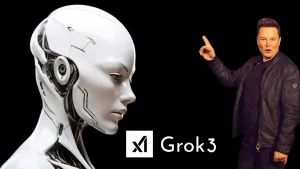Voice User Interface (VUI) has transformed the way humans interact with digital devices. It allows users to communicate with systems using voice commands, eliminating the need for touch or typed inputs. Over the past decade, VUI technology has advanced significantly, becoming an essential feature in smartphones, smart home devices, automobiles, and customer service applications. As artificial intelligence and natural language processing continue to evolve, the importance of VUI integration grows, offering seamless, intuitive, and efficient user experiences.
Google vs. Alexa vs. Siri: Best Voice Assistant in 2025
Understanding Voice User Interfaces
A Voice User Interface enables interaction between humans and computers through spoken language. It comprises several core components, including Automatic Speech Recognition (ASR), which converts spoken words into text; Natural Language Processing (NLP), which interprets and understands human language; and Text-to-Speech (TTS), which converts text back into spoken words.
VUI can be categorized into two types: Conversational User Interfaces (CUI), which enable complex dialogues, and Voice Command Devices, which respond to predefined voice commands.
Benefits of VUI Integration
Enhanced User Experience
One of the primary advantages of VUI integration is the enhanced user experience it offers. Unlike traditional interfaces that require typing or navigation through multiple menus, VUI provides a hands-free and eyes-free interaction. Users can simply speak commands, making their interactions more natural and efficient. Whether it’s searching for information, controlling smart home devices, or setting reminders, VUI makes digital interactions more intuitive.
Accessibility Improvements
VUI significantly improves accessibility for individuals with disabilities or those who have difficulty using traditional input devices. People with visual impairments, motor disabilities, or literacy challenges can benefit greatly from voice-controlled systems. By bridging the digital divide, VUI makes technology more inclusive, ensuring that everyone, regardless of their abilities, can easily access and interact with digital platforms.
Increased Efficiency and Productivity
Voice interfaces streamline tasks by allowing users to perform multiple actions quickly without needing to manually input commands. Whether in the workplace or at home, VUI enhances productivity by enabling multitasking. For example, professionals can use voice commands to dictate emails, schedule meetings, or retrieve important information while performing other tasks simultaneously. This efficiency makes VUI a valuable tool in both personal and professional environments.
Challenges in VUI Integration
Speech Recognition Accuracy
While VUI technology has come a long way, challenges remain, particularly in speech recognition accuracy. Factors such as accents, dialects, background noise, and speech variations can affect the system’s ability to correctly interpret commands. Continuous advancements in machine learning and AI are helping improve accuracy, but achieving flawless recognition across diverse user groups remains an ongoing challenge.
Discoverability and Usability Issues
Another challenge is discoverability, as users may not always know what voice commands are available. Unlike graphical interfaces that present options visually, VUI requires users to remember specific commands, which can sometimes be frustrating. Designing intuitive voice interactions and providing guidance on available commands are essential to overcoming this limitation.
Privacy and Security Concerns
With VUI devices constantly listening for voice inputs, privacy and security concerns arise. Users worry about data collection, storage, and potential unauthorized access. Companies must implement strong encryption and transparent data policies to address these concerns and ensure user trust in voice-activated technologies.
Applications of VUI Across Industries
Smart Home Devices
Voice-controlled smart home devices such as Amazon Alexa, Google Assistant, and Apple Siri have revolutionized home automation. Users can control lighting, appliances, thermostats, and security systems using simple voice commands, enhancing convenience and energy efficiency.
Automotive Industry
Modern vehicles integrate VUI for hands-free control of navigation, music, calls, and climate settings. This not only improves convenience but also enhances road safety by minimizing distractions while driving.
Healthcare Sector
In healthcare, VUI plays a crucial role in patient monitoring, medical transcription, and telemedicine. Voice-enabled devices assist doctors in recording patient information and enable patients to interact with healthcare systems without manual input.
Customer Service and Support
Many businesses are integrating VUI into customer service platforms, replacing traditional call centers with AI-powered virtual assistants. These systems handle inquiries efficiently, reducing wait times and improving customer satisfaction.
Design Principles for Effective VUI Integration
User-Centered Design Approach
To create an effective VUI, designers must focus on user needs and preferences. Understanding the context in which users interact with voice systems ensures a more intuitive and seamless experience.
Clarity and Brevity in System Responses
VUI systems should provide clear and concise responses. Overloading users with excessive information can lead to frustration, so responses should be structured for quick understanding and ease of use.
Error Handling and Recovery Strategies
Effective VUI design includes robust error-handling mechanisms. When misunderstandings occur, systems should guide users to rephrase commands or offer alternative options to ensure a smooth interaction.
Future Trends in VUI
Advancements in AI and Machine Learning
Artificial intelligence and machine learning are making VUI smarter by enabling better context awareness and personalized user experiences. Future developments will focus on more natural and human-like interactions.
Integration with Augmented Reality (AR) and Virtual Reality (VR)
As AR and VR technologies advance, VUI will play a critical role in enhancing immersive experiences. Users will be able to navigate virtual environments using voice commands, making interactions more dynamic.
Expansion into New Sectors
VUI is expected to expand into various industries, including education and financial services. Voice-assisted learning platforms and banking applications will leverage VUI to provide more efficient and user-friendly experiences.
Voice User Interface (VUI) integration is reshaping how we interact with technology, making digital experiences more accessible, efficient, and user-friendly. Despite challenges such as speech recognition accuracy and privacy concerns, ongoing advancements in AI and machine learning are continuously improving VUI capabilities.
As more industries adopt voice-enabled technologies, the future of VUI looks promising, offering endless possibilities for innovation and convenience. Businesses and developers should embrace VUI integration to stay ahead in the evolving digital landscape.
Here are some frequently asked questions about Voice User Interfaces (VUIs):
1. What is a Voice User Interface (VUI)?
A Voice User Interface (VUI) is a technology that allows users to interact with devices and applications through voice commands. Instead of relying on touchscreens or keyboards, users can simply speak to control various functions. VUIs are commonly found in virtual assistants like Amazon Alexa, Apple Siri, Google Assistant, and voice-controlled smart home devices. This technology makes interactions more natural, hands-free, and efficient, improving accessibility and user convenience.
2. How does a Voice User Interface work?
A VUI works by using Automatic Speech Recognition (ASR) to convert spoken words into text. Then, Natural Language Processing (NLP) analyzes the text to understand the user’s intent. Once the system interprets the command, it processes the request and responds accordingly, often using Text-to-Speech (TTS) technology. This process allows users to ask questions, give commands, and receive voice responses in a conversational manner.
3. What are the benefits of using a VUI?
Voice User Interfaces offer numerous benefits. They allow for hands-free operation, making them ideal for multitasking and accessibility. VUIs enhance convenience by providing quick and easy access to information without requiring manual input. They also create a more natural and engaging user experience by enabling conversational interactions. In addition, VUIs improve efficiency in smart home automation, customer service, and in-car systems, reducing the need for traditional interfaces.
4. What are some common applications of VUIs?
VUIs are widely used in various applications, including smart home devices, virtual assistants, customer service chatbots, and automotive systems. They enable users to control smart appliances, make phone calls, send messages, search the internet, and set reminders using voice commands. In business settings, VUIs enhance customer service by providing automated support, answering FAQs, and processing orders. The integration of VUIs in vehicles helps drivers navigate, play music, and control settings without taking their hands off the wheel.
5. What are the challenges of VUI integration?
Despite its benefits, VUI integration comes with challenges. One major issue is speech recognition accuracy, as accents, dialects, and background noise can interfere with understanding. Another challenge is ensuring user discoverability, as people may not be aware of available voice commands. Privacy concerns also arise, as VUIs often require continuous listening, which may raise data security and confidentiality issues. Developers must address these challenges to improve user trust and adoption.
6. How does VUI improve accessibility?
VUIs significantly improve accessibility for people with disabilities. Individuals with visual impairments can use voice commands to access information and control devices without relying on a screen. Similarly, those with mobility impairments benefit from hands-free operation, allowing them to perform tasks independently. VUIs also aid elderly users by simplifying interactions with technology, reducing the need for complex manual inputs.
7. How can businesses benefit from VUI technology?
Businesses can leverage VUI technology to enhance customer experience and streamline operations. VUIs enable faster and more efficient customer service by automating responses to common inquiries. They also improve user engagement by offering personalized recommendations and interactive shopping experiences. In addition, businesses can use VUIs for internal purposes, such as voice-activated data retrieval, meeting scheduling, and workflow automation, increasing overall productivity.
8. How is user privacy protected in VUI systems?
Privacy is a major concern for VUI users, as voice data is often processed and stored by companies. To protect user privacy, many VUI systems use encryption to secure voice data during transmission. Some devices also offer options to disable voice recording or delete stored voice history. Users can manage privacy settings by reviewing permissions and choosing how their data is used. It is essential for companies to be transparent about data collection and provide users with control over their information.
9. What future trends can we expect in VUI technology?
The future of VUI technology is expected to bring advancements in AI and machine learning, making voice assistants more context-aware and personalized. Improved speech recognition will enhance accuracy, even in noisy environments or with different accents. Integration with augmented and virtual reality (AR/VR) will create more immersive experiences, allowing users to interact with digital environments using voice commands. Additionally, VUIs will expand into more industries, including healthcare, education, and finance, further transforming the way we interact with technology.
10. How can I start using a Voice User Interface?
Getting started with a VUI is simple. First, choose a device that supports voice interaction, such as a smartphone, smart speaker, or voice-enabled appliance. Set up the voice assistant by following the manufacturer’s instructions, usually by linking it to an account and enabling voice recognition. Learn basic commands to perform tasks like setting alarms, playing music, or checking the weather. As you become more familiar with the technology, explore advanced features like smart home integration and voice-controlled apps to enhance your experience.




